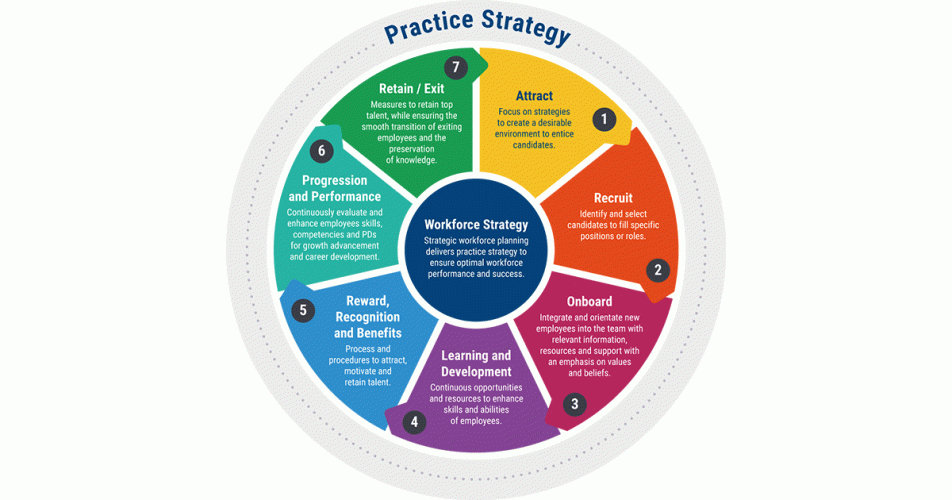Introducing the employment lifecycle
This month the Workplace Relations Team want to introduce you to the employment lifecycle. Each month we will take an in-depth look at each segment within the wheel.

The employee life cycle provides a comprehensive understanding of the various stages employees go through in their career at your practice and the processes involved in managing employees throughout their employment journey. Let’s take a look at each segment in more detail.
Practice strategy – the easiest way to describe strategy is not too dissimilar to how we look at any sports game. The aim of the game is to come out on top and that might not always mean winning the game. It might be giving new players game experience and resting other players for a bigger match in the future.
It’s the coach’s job to consider all the games for the session and future sessions and plan accordingly with regular evaluation to ensure the practice team remains aligned to those goals and able to adapt when necessary.
Workforce strategy - once you have your practice strategy or your game plan, then we look at the players needed to carry out the game plan - what talent, skills and capabilities are needed for current and future games in order to meet the goals you have for your practice this sessions and in future sessions.
- Attract - how we go about attracting the candidates/players with the talent, skills and capabilities identified in the game plan or workforce strategy.
- Recruit - the process of selecting the right candidate/player for the vacant position on the team with the aim of not having the competition snapping them up before we can sign them.
- Onboard – the way in which new employees/players are provided relevant information and support so they feel part of the team and integrate quickly with other players.
- Learning and development – is the focus placed on enhancing knowledge, skills and capabilities of individuals within the team.
- Reward, recognition and benefits - the way a practice effectively utilises a mix of tangible or intangible incentives, acknowledgment, appreciation and non-wage compensation initiatives, such as Player of the Match to create a positive and engaging team environment that motivates players to enhance their individual performance and contribution to the team.
- Progression and performance – go hand-in-hand as in consistent high levels of performance excellence in each game is often a prerequisite for career progression or access to new opportunities.
- Retain/exit – are contradictory in nature as they refer to different player outcomes. However, they are the balance to the effectiveness of the workforce strategy or our game plan. If we don’t want to always be looking for new players, we need to understand how we can keep the players that are critical to our game plan engaged and learn from the players who leave.
|
Workplace Relations Support can provide general guidance and advice on any of the information in this article and can be reached on (07) 3872 2222 or through email support at workplacerelations@amaq.com.au. |
|
|
Workplace Relations Toolkit Workplace Relations Toolkit subscribers receive priority access to the WR team in working with your practice team to further define your game plan and providing the tools to practically apply it. |
|
|
Workplace Relations Consultancy Workplace Relations Consultancy can support coaching staff to tailor practical applications that will work with what is already in play at your practice to enhance and support your current game plan. |